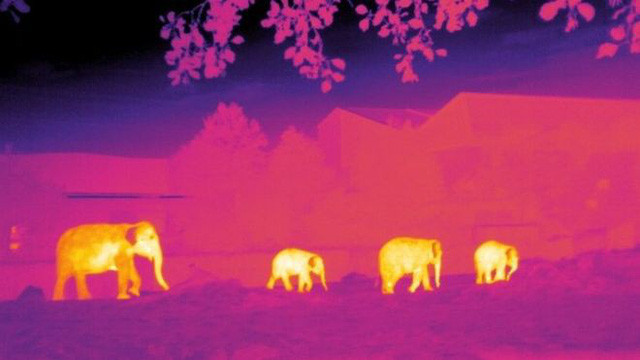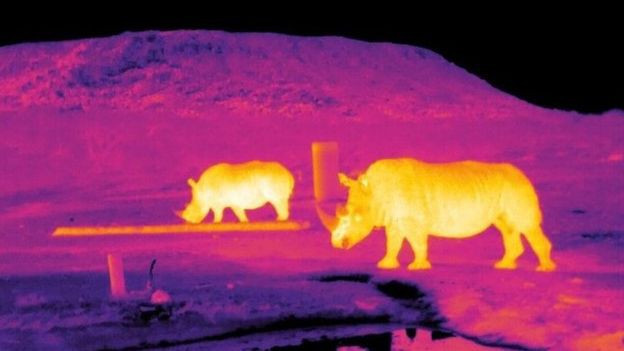Save rare animals with ... astronomy
British scientists are using techniques to study distant stars in astronomy to examine endangered animals.
The team is developing a system that automatically recognizes mammals by using cameras attached to a drone .
This system can identify mammals from their own heat, and even work when trees get in the way. Details of this system were presented at the annual meeting of the European Astronomical Society in Liverpool, England.

Elephants are more recognizable from its body heat.
This idea was developed by Dr. Serge Wich, a conservation expert at John Moores University in Liverpool, and Dr. Steve Longmore, an astrophysicist who is also working at the university. Dr. Wich said that the system has the potential to significantly improve the accuracy of monitoring endangered species and thus will help people save them.
Presently, conservation experts estimate the number of endangered species by counting each animal or through the signs they leave. This is an inaccurate way of doing science because animals can live in areas that the observer cannot reach, or if the animals have migrated to a different area than before.
Dr. Wich developed a system to monitor them using infrared cameras mounted on drones.
Tests at the Chester Zoo and Knowsley Nature Reserve show that the system can detect terrestrial animals from heat generated by them, even when covered by trees.
However, the problem is that they cannot always identify mammals - especially when they are far away. Dr. Wich needs a system that can identify different species from specific characteristics related to their heat.

Each species has its own unique body temperature model.
He explained his problem to his neighbor, Dr. Steve Longmore, while chatting on the fence. Dr. Steve Longmore was once an astronomer and he said that some people have identified the size and age of stars far away from their own characteristics related to their heat.
So Dr. Wich works with astrophysicist Claire Burke, also working at John Moores University. Speaking to the BBC, she said that because she was in charge of identifying the largest galaxies in the universe from the light they emitted, she came up with software that could identify different animals from "samples" of heat generated by them.
Each species has its own colder and warmer areas and that is unique, she said.
"When looking at animals in infrared heat rays, we are looking at their body heat and they glow in the video. That glow is very similar to the way stars and galaxies are in. the universe glows, " explains Dr. Burke.
"So we can apply the techniques and software used in astronomy for decades to automatically detect and measure this glow."

The drone (drone) device can automatically provide the exact number of endangered species.
This system can also provide information about the health of animals. If an animal is injured, its body part will glow more than the rest. Similarly, according to Dr. Burke, the sick animals also have another heat profile.
"The fact that you know how many animals you have, as well as where they are and how you are in health, you can set up a good conservation campaign to take care of them," Dr. Burke said.
"And if you can also track their tracks, you can know what they need to survive and grow, and this helps us. For example, if we need to move an animal to elsewhere because its habitat has been destroyed, you will know better where it needs to be resettled , " she concluded.
- Animals are 'facing' the danger of extinction
- Discovered 3 species of precious animals from the original ... time
- Drop 37 rare animal animals about nature
- 10 rare albino species
- DNA testing for wild dogs suddenly discovered the rare animals on the planet
- Internet threatens rare animals
- Many rare animals come to U Minh forest
- Rare and precious animals have a bad appearance
- 'Hunting' is a photo of dwarf hippo that is about to become extinct
- Tatu found giant, rare
- Rescue many rare monkeys
- Rare civet civet returns to Vietnam
 Animal 'suffering' after hibernation
Animal 'suffering' after hibernation Why do goats climb well?
Why do goats climb well? Scientists were surprised to see chimpanzees eating turtles
Scientists were surprised to see chimpanzees eating turtles Giant catfish died deadly due to drought in Thailand
Giant catfish died deadly due to drought in Thailand